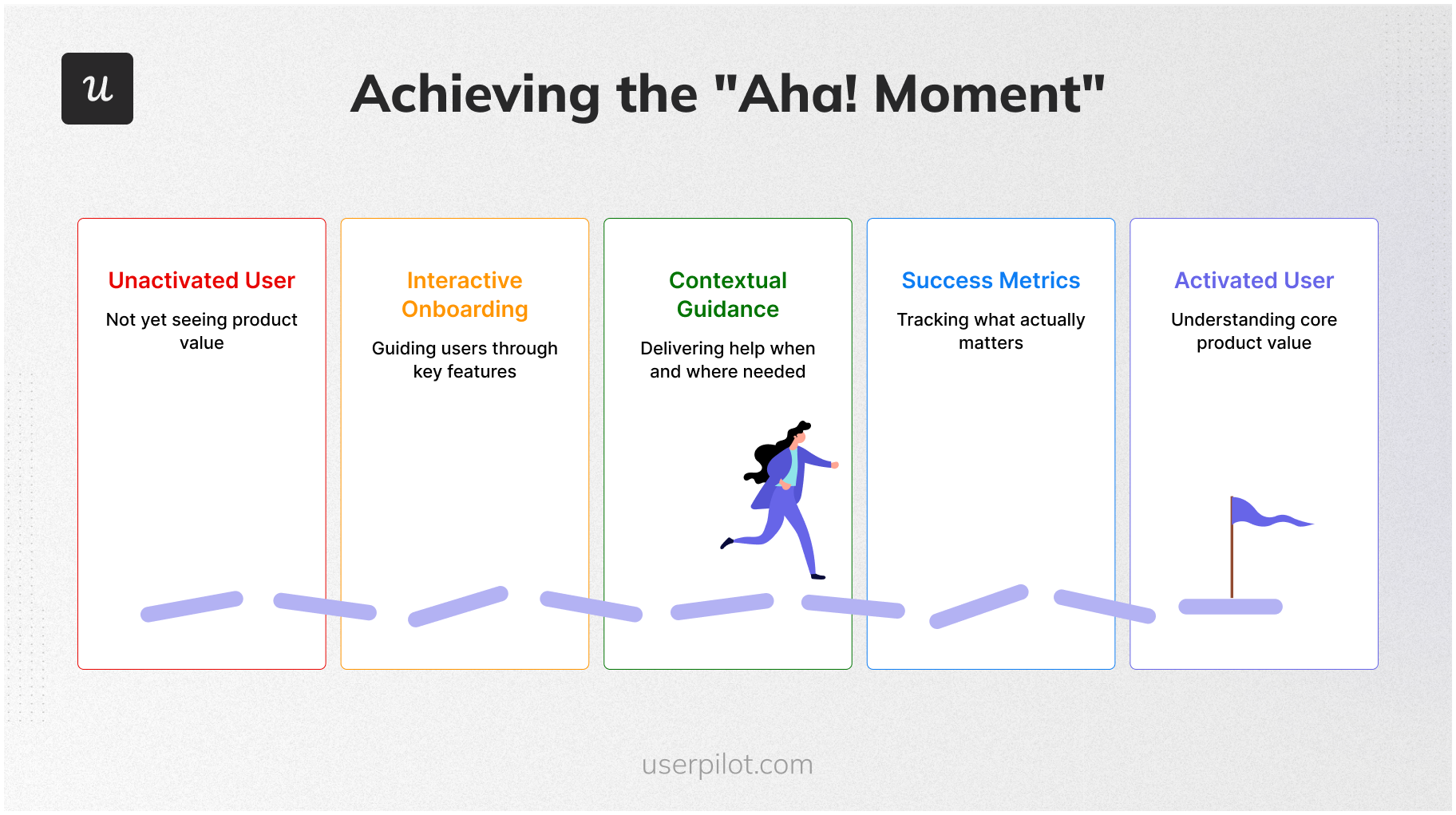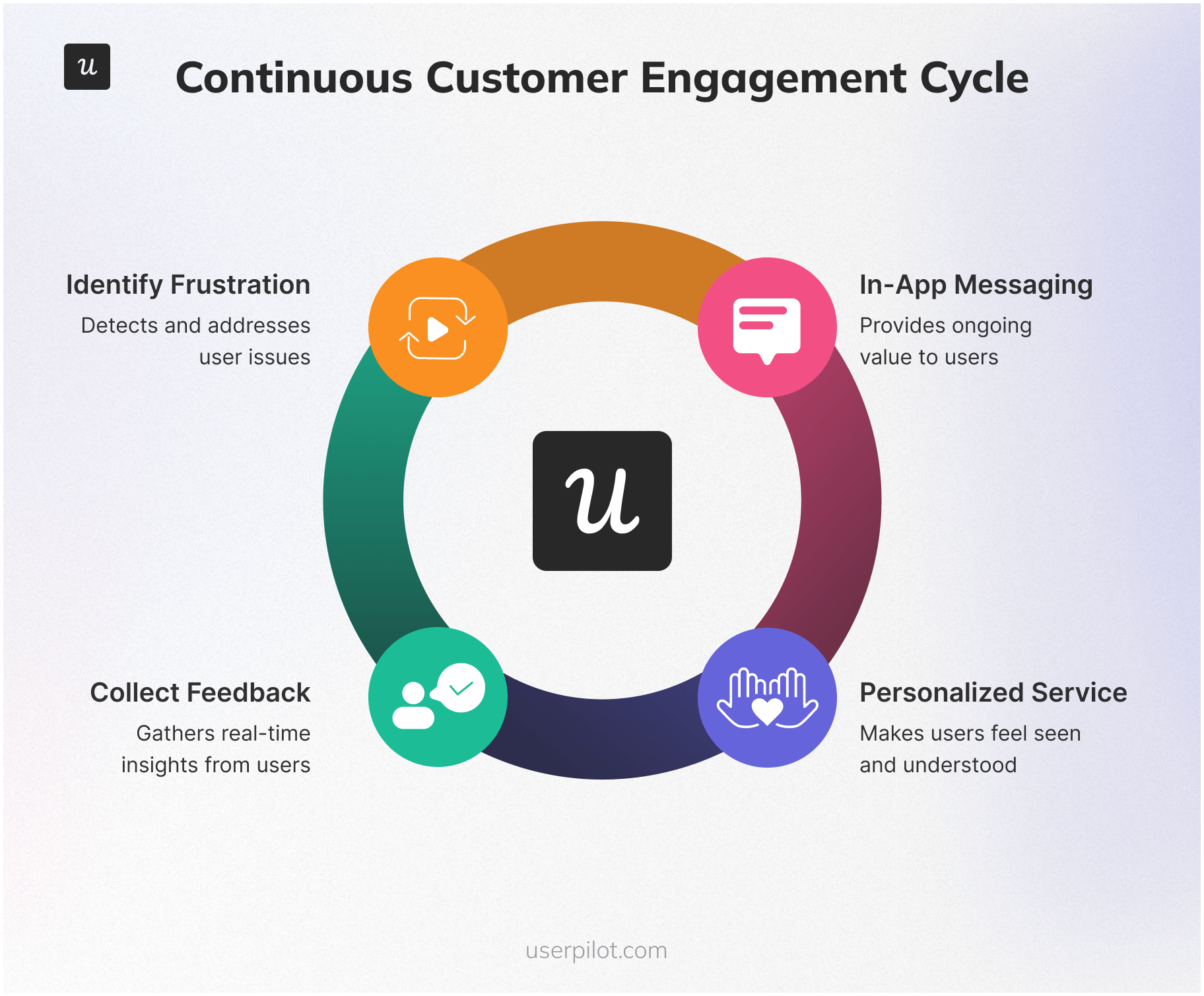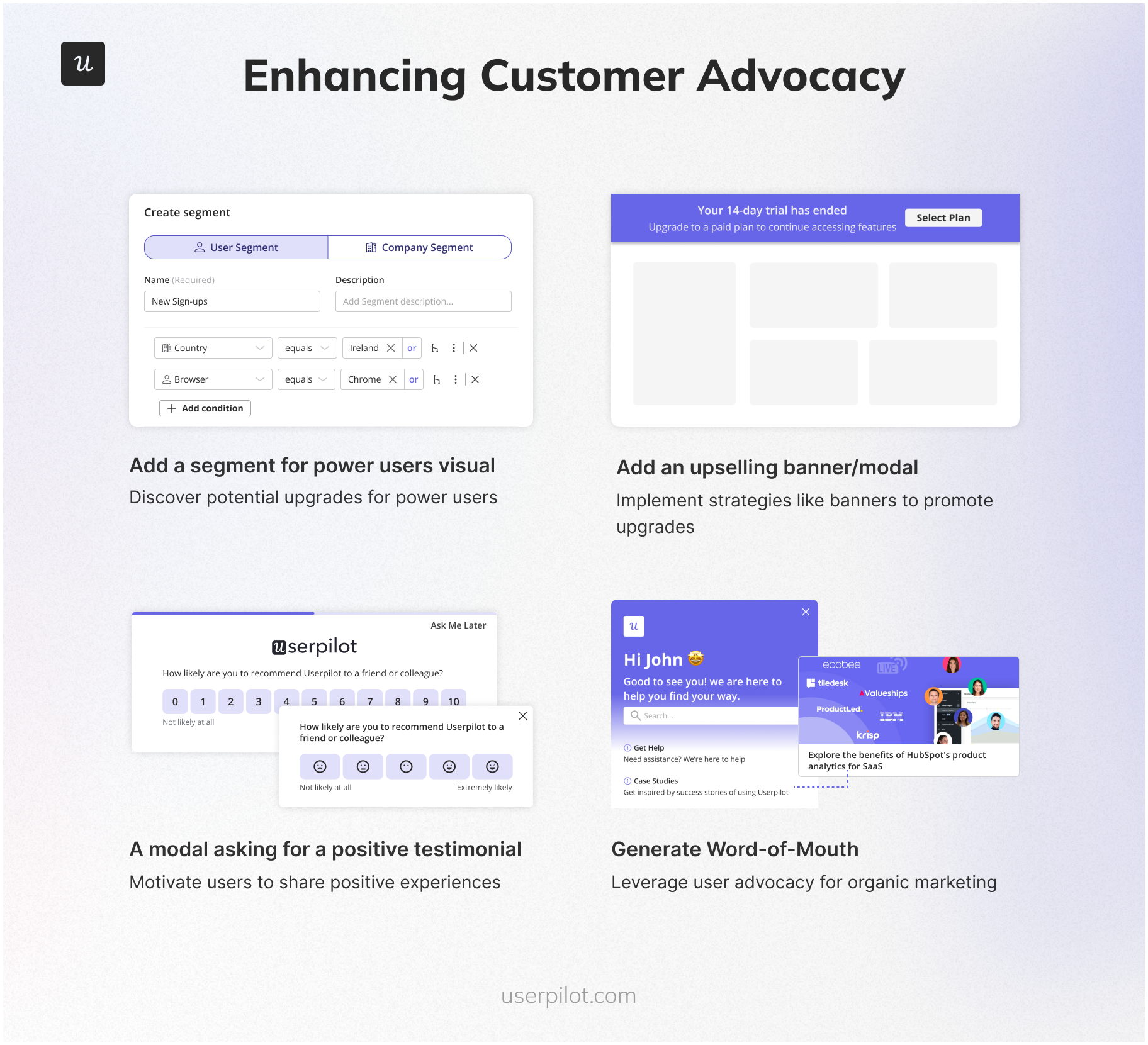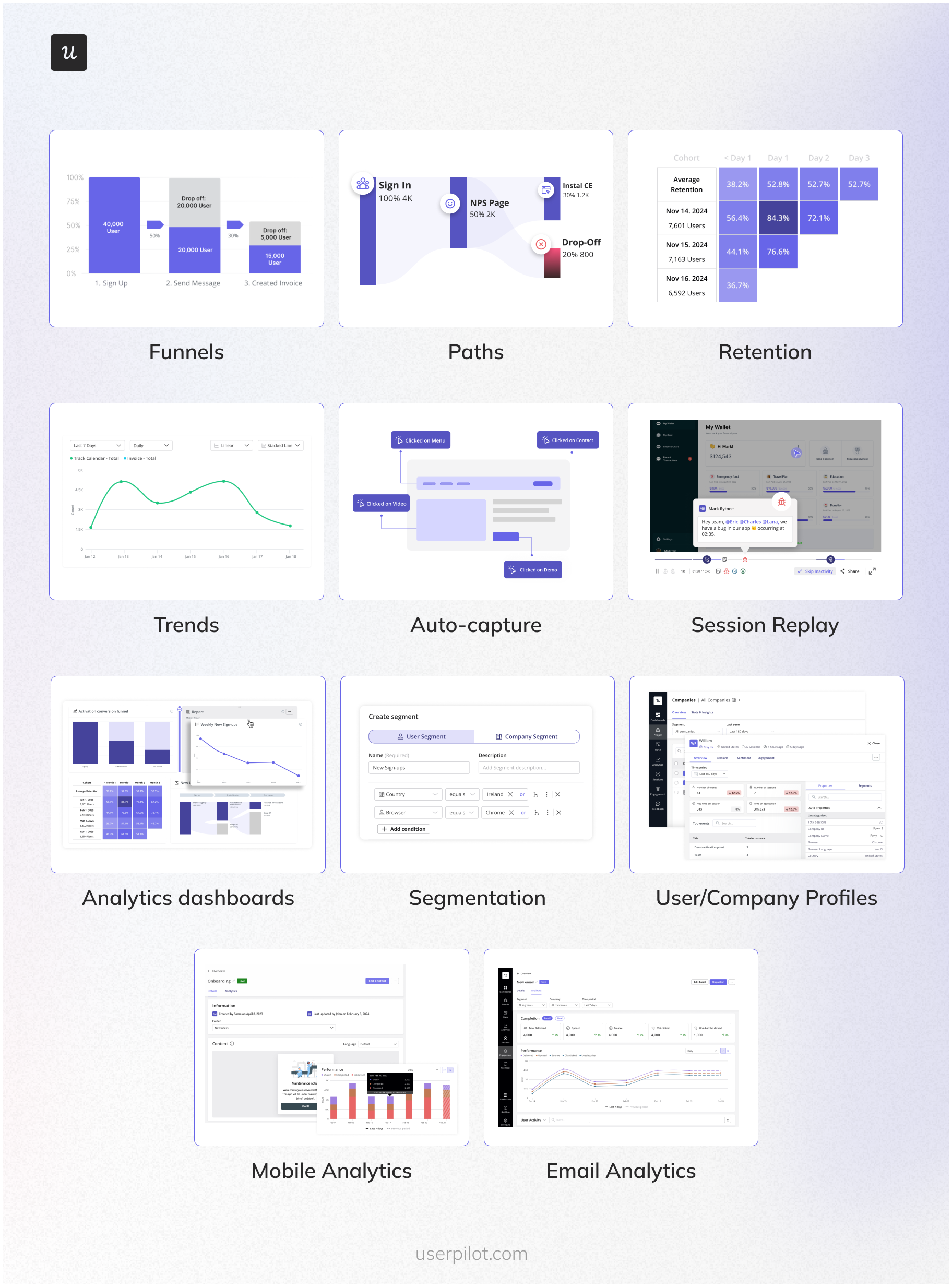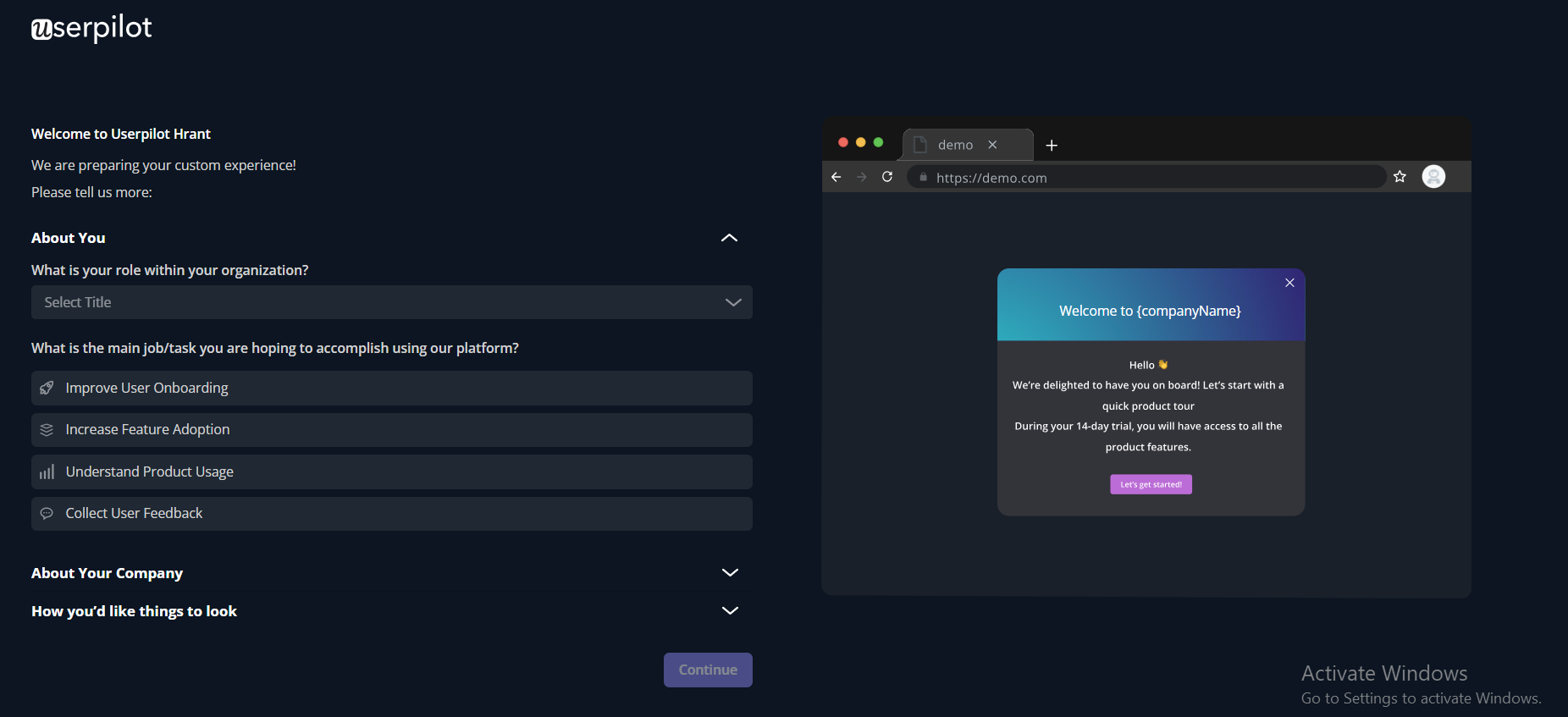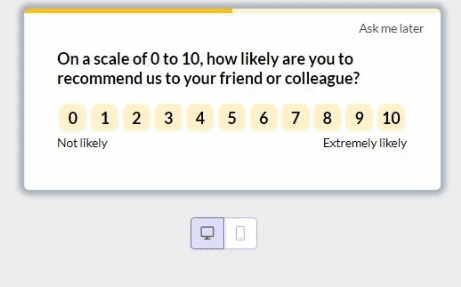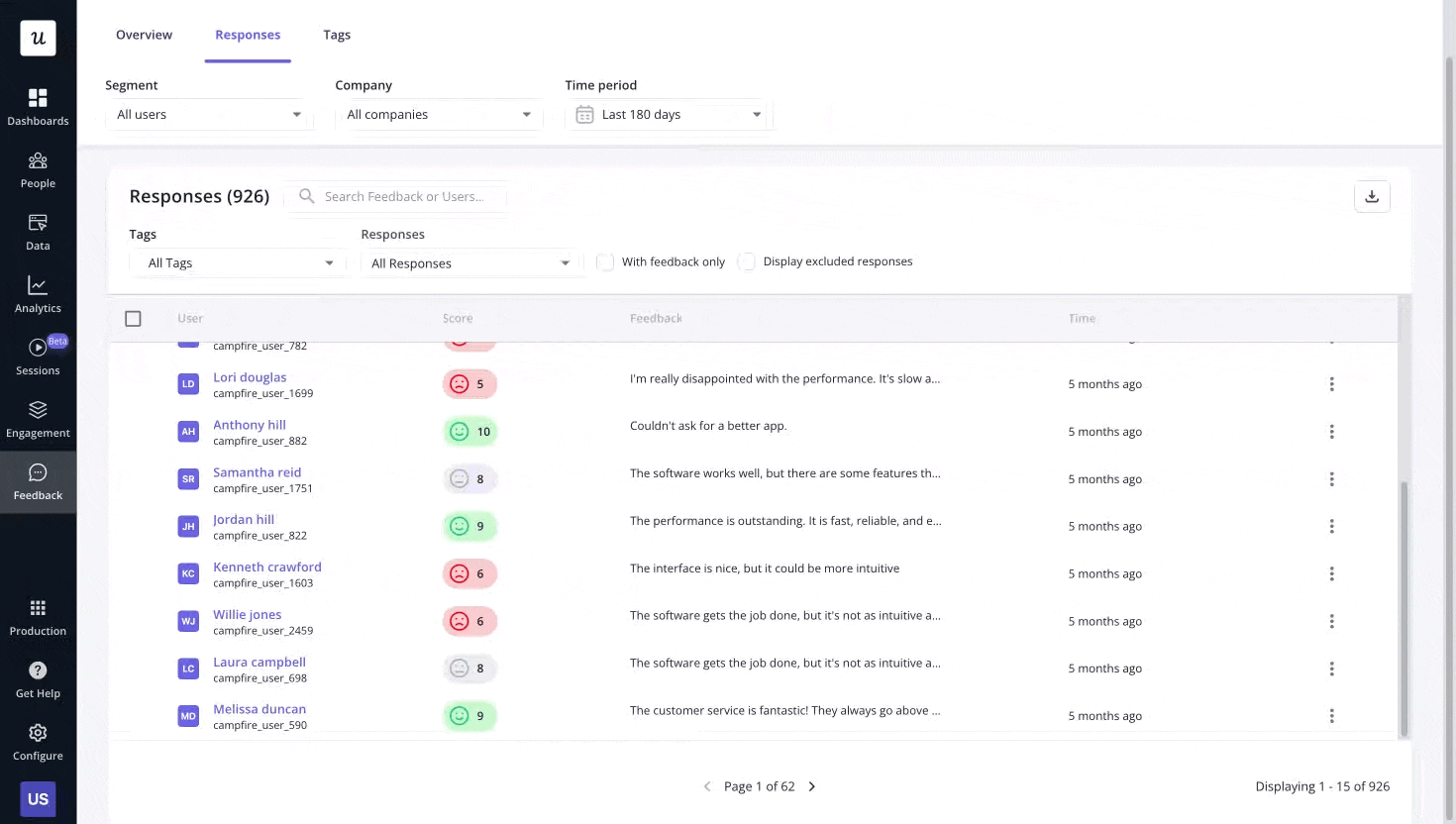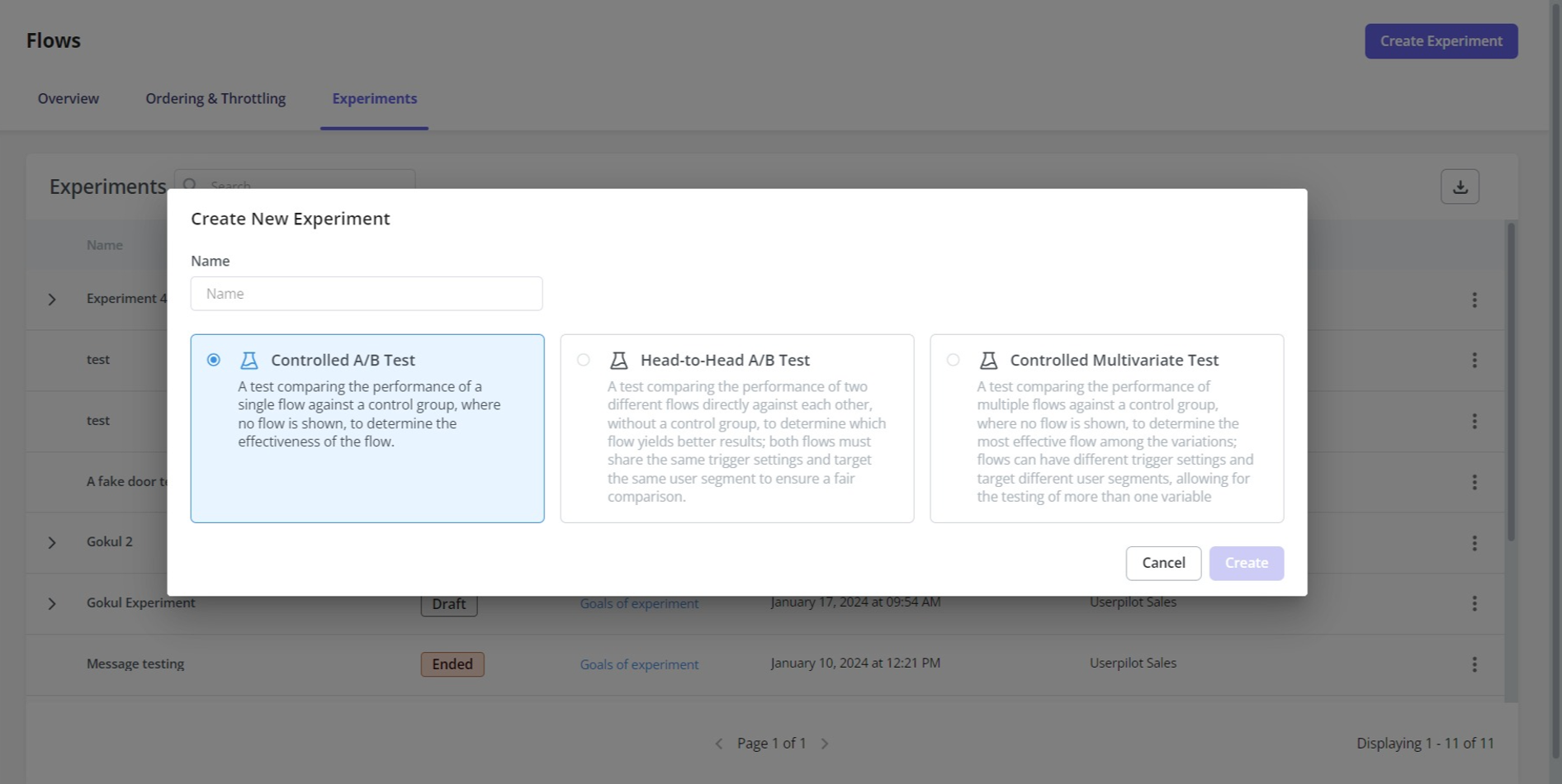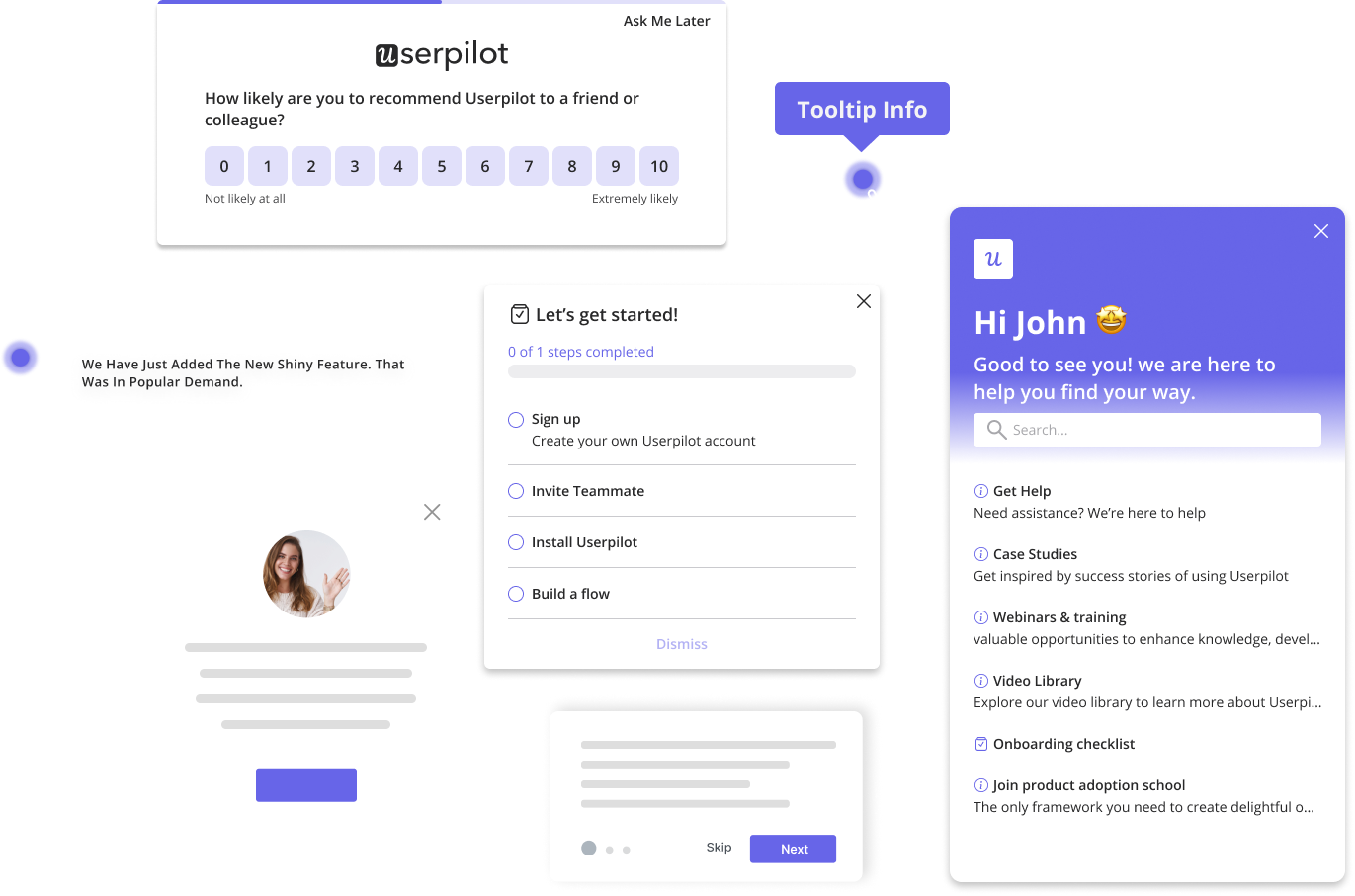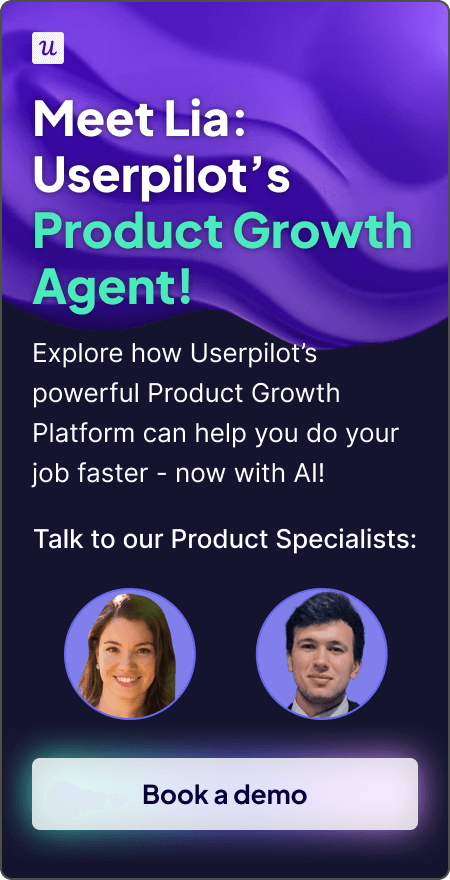Mastering Customer Engagement: A Playbook
Customer engagement isn’t just about getting users to click around your product. Real engagement happens when users find consistent value that keeps them coming back, upgrading, and advocating for your solution.
At Userpilot, we’ve helped thousands of product teams transform their user engagement strategies. But here’s what most companies get wrong: they focus on vanity metrics instead of meaningful interactions that drive retention and growth.
That’s why I’m going to share some insights from my experience on how we approach customer engagement, turning curious users into loyal advocates.
Try Userpilot Now
See Why 1,000+ Teams Choose Userpilot
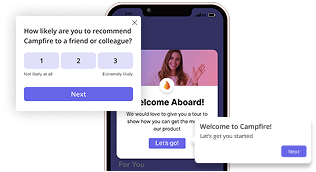
The engagement reality check
Most SaaS companies are drowning in engagement data but starving for insights. They track page views, feature clicks, and session duration, but can’t answer the fundamental question:
“Are our users getting closer to their desired outcome?”
This disconnect happens because teams confuse activity with progress. A user clicking through your app isn’t necessarily engaged; they might be confused, lost, or frustrated.
Real engagement is progress toward value. It’s when users complete meaningful actions that move them closer to their goals while using your product.
The foundational pillars of user engagement
Think of engagement as a journey, not a single event. It starts from the moment someone first interacts with your product and continues throughout their entire lifecycle. After analyzing thousands of user journeys at Userpilot, I’ve identified three pillars that help identify engaged users.
Pillar 1: Activating new users: Value discovery
The first few moments with your product are crucial. It’s where users decide if your solution actually solves their problem. Our goal here is to get them to their “Aha! moment” as quickly as possible. This is when they truly understand the core value your product offers. If we can’t activate new users effectively, all the effort in acquiring them goes to waste.
My team puts a lot of effort into refining our user onboarding process. It’s not about lengthy product tours that overwhelm new users, which often fail to engage. Instead, we focus on interactive onboarding that guides users step-by-step through key features. We use onboarding tooltips and checklists to lead them directly to that first moment of value. For instance, checklists are incredibly effective at improving time to value, providing clear, actionable steps that encourage users to interact more with your product.
We’ve also found success with contextual onboarding. This means delivering guidance exactly when and where a user needs it, based on their behavior, rather than a generic, one-size-fits-all approach. For our mobile apps, we design native mobile carousels and slideouts, ensuring the experience feels natural and seamless on any device.
In the end, it comes down to 3 main principles:
- Progressive disclosure that reveals features based on user needs.
- Contextual guidance that appears when users need it most.
- Success metrics that show progress toward their objectives.
Pillar 2: Making users stick: Habitual usage
Once a user is activated, the next challenge is to make them stick. This is about fostering consistent usage and building habits around your product. It’s far more cost-effective to keep existing customers than to constantly acquire new ones. In my experience, this means creating a sticky product that users can’t imagine living without.
We achieve this through continuous engagement, not just during onboarding. This involves in-app messaging that provides ongoing value, from announcing new features to offering contextual help. Personalized customer service is key here, too; users appreciate feeling seen and understood. We use in-app surveys, like NPS surveys, to collect real-time feedback and understand customer sentiment. This data helps us identify user frustration and address it quickly, turning potential churn into positive experiences.
Our goal is to build engagement loops that keep users coming back. For example, after a user completes a core task, we might prompt them with a suggestion for the next logical action, subtly guiding them deeper into the product’s capabilities. This kind of proactive engagement is crucial for increasing product engagement and ensuring users consistently find value.
Key indicators of habitual usage:
- Daily/weekly active usage of core features.
- Reduced time-to-value on repeat actions.
- Self-directed exploration of advanced capabilities.
Pillar 3: Driving expansion and advocacy: Growing together
True mastery of customer engagement means moving beyond just retention. It’s about turning loyal users into advocates who spread the word and grow their use of your product. This fuels sustainable growth and can lead to significant Net Revenue Retention.
We work to identify upsell opportunities by understanding which features our power users value most. Sometimes, a well-timed upselling technique, like a banner announcing new tiers, can make a big difference. We also encourage customer advocacy by celebrating our users’ successes and making it easy for them to share their positive experiences. This organic word-of-mouth marketing is invaluable.
The data-driven engine: Your engagement stack
None of this would be possible without the right tools and a solid data strategy. Data is the fuel that powers our engagement engine. As Director of Customer Success, I rely heavily on understanding user behavior to inform our strategies and improve the customer journey. This means having a robust “engagement stack.”
At Userpilot, we leverage product analytics to gain deep insights. We track everything from user activity patterns to product usage metrics, giving us a clear picture of how users interact with our platform. Our user engagement analytics help us pinpoint exactly where users might be struggling or where they find immense value. We use funnel analysis to visualize user journeys and identify drop-off points, so we know where to optimize. Tools like our custom analytics dashboards and session replay allow us to see what matters most to our business.
To truly personalize experiences, you need to understand your users in detail. This is where customer segmentation comes in. We segment users based on their demographics, behavior, and even their feedback to deliver personalized onboarding and in-app messages. Userpilot’s own segmentation features make it easy to create dynamic groups of users and companies based on custom properties and in-app behavior. We can then target specific content, like a resource center module with tailored help articles, to ensure relevancy.
Our ability to automate customer engagement is also crucial. We connect Userpilot with our CRM, like HubSpot or Salesforce, to sync user properties and events. This means a sales rep can see a user’s in-app activity directly in their profile, enabling more informed conversations. We can even send Userpilot events directly to analytics platforms like Amplitude or Mixpanel for deeper analysis. The goal is to break down data silos and give every team a unified view of the customer.
The product-led engagement playbook
Here’s a practical guide, based on what I’ve seen work, to build your own customer engagement playbook:
Step 1: Define your goals and metrics
Before you do anything, know what you want to achieve. Are you aiming to reduce customer churn, increase feature adoption, or boost overall customer loyalty?
Once you have clear goals, identify the right customer engagement metrics to track. For instance, if you want to improve loyalty, your NPS score is a key metric.
Step 2: Know and understand your users deeply
You can’t engage effectively if you don’t know who you’re talking to. Start by collecting customer data. This includes both static user and company properties (like role or plan type) and dynamic behavioral data (what actions they take in your app).
Create user personas to bring your segments to life. Map out the customer journey to spot all the touchpoints where you can engage.
I recommend creating a value journey map that identifies:
- Entry points: How do different user segments discover your product?
- Activation moments: What actions signal a user “gets it”?
- Value milestones: What achievements keep users progressing?
- Expansion triggers: When are users ready for more advanced features?
Step 3: Craft contextual experiences
Deliver the right message to the right user at the right time. This means going beyond generic emails and embracing in-app communication.
Our approach:
- Role-based onboarding: Different user personas get different experiences.
- Progressive profiling: Gather user context gradually through usage and adapt the onboarding flows accordingly.
- Proactive guidance: Surface help exactly when users need it.
We use our platform to create these experiences. For example, when a new product manager signs up, they see onboarding focused on user adoption metrics, while a developer gets guidance on implementation best practices.
Step 4: Listen and adapt
Engagement is a two-way street. Constantly gather customer feedback. We use various surveys to collect both quantitative and qualitative data.
Setting up a customer feedback loop ensures that insights go back to product teams for continuous improvement. Regularly analyzing NPS responses helps us identify detractors and take proactive steps to address their concerns, often turning them into promoters.
Step 5: Test and iterate constantly
Don’t guess what works; test it. We consistently run A/B tests on our flows and messages to see what drives the best results.
This data-driven approach means we’re always refining our strategy to maximize engagement.
Key areas to experiment with:
- Onboarding sequence and messaging.
- Feature introduction timing.
- Help with content placement and format.
- Success milestone celebrations.
Common engagement mistakes (and how to avoid them)
In my role, I see the same engagement mistakes repeatedly. Here are the biggest ones:
| 🚨The Mistake | ❌ The Problem | ✅ The Solution |
| Feature Pushing Instead of Problem Solving | Showing every feature hoping something sticks | Start with user goals, then introduce relevant features contextually |
| One-Size-Fits-All Onboarding | Treating all users the same regardless of their needs | Segment users and personalize their journey from day one |
| Measuring Activity, Not Progress | Celebrating clicks and sessions without tracking outcomes | Define value metrics and measure user progression toward goals |
| Front-Loading Information | Overwhelming users with everything upfront | Use progressive disclosure to reveal complexity gradually |
Your path to engagement mastery
Mastering customer engagement isn’t about grand gestures; it’s about a consistent, thoughtful approach to every customer interaction.
By focusing on activating users quickly, building lasting habits, and turning customers into advocates, you create a flywheel of growth.
Tools like Userpilot give product, success, and growth teams the power to build, measure, and refine these experiences without needing to write a single line of code. It’s a game worth playing, and with this playbook, you’re well-equipped to win.

